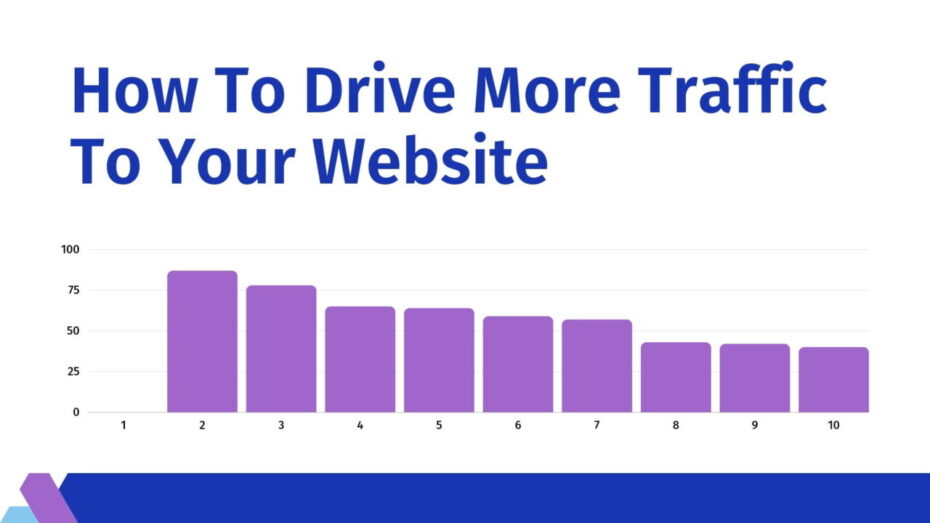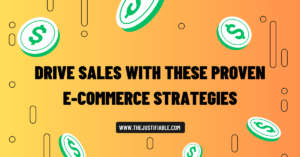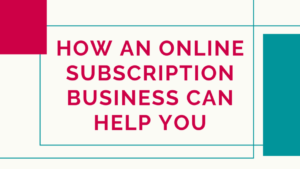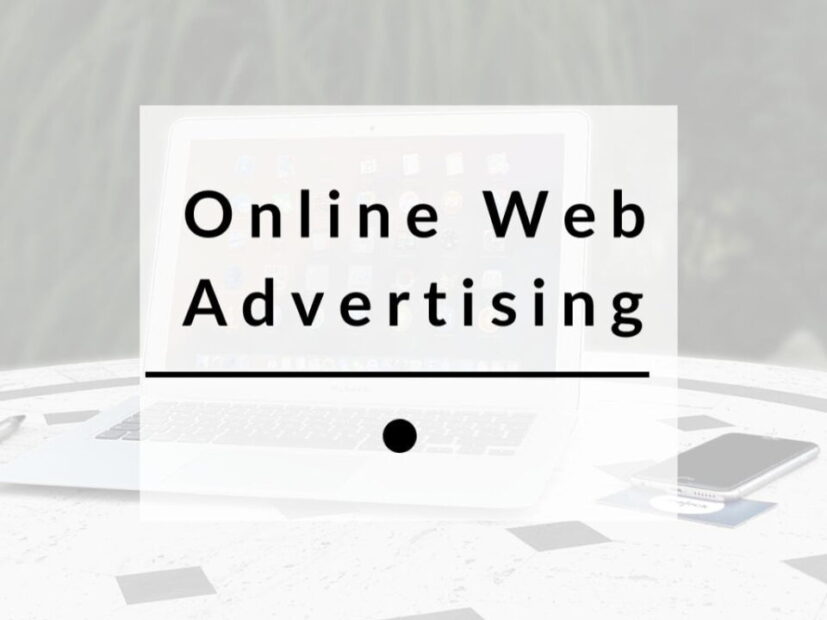Are you looking to drive more traffic to your website? Wondering what strategies can help you attract more visitors and boost your online presence? In this article, we’ll explore proven methods and innovative tactics to increase your site’s visibility and engagement.
From optimizing your content for search engines to leveraging the power of social media, we will guide you through actionable steps that can make a significant difference. Here’s how you can start enhancing your website’s traffic effectively and sustainably.
With a focus on delivering high-quality, detailed information, I’ll share insights that are not only based on industry best practices but also from my personal experience in digital marketing.
My intention is to provide you with genuine value, helping you understand the key strategies that can lead to increased web traffic. So, let’s dive in and explore how you can transform your website into a visitor magnet.
Table of Contents
Assess Your Current Website Traffic Baseline
Understanding your current website traffic is crucial if you aim to drive more traffic to your website. By establishing a clear baseline, you can measure growth and identify which strategies are working. Most importantly, a detailed analysis will help you pinpoint areas for improvement.
My suggestion is to start with the basic metrics such as total visits, unique visitors, page views, and bounce rates. These initial figures will give you a comprehensive overview of your site’s performance.
From my perspective, it’s also vital to track where your traffic is coming from. This involves looking at referrals, direct traffic, social media sources, and organic search results. Knowing these sources will help you understand which channels are most effective and where you might need to increase your marketing efforts.
According to industry experts, diversifying your traffic sources can lead to more robust site traffic and reduced vulnerability to single-channel fluctuations.
Finally, I recommend setting realistic goals based on your baseline data. For instance, if your current SEO efforts are bringing in a modest number of visitors, setting a target for a 50% increase in organic traffic within the next quarter could be a challenging yet achievable goal.
This approach ensures that your efforts are focused and aligned with specific outcomes, making it easier to track progress and make adjustments as needed.
Tools and Techniques to Measure Your Site’s Visits
To effectively measure your website’s traffic, you’ll need the right tools. Google Analytics is a staple in this arena, offering a wealth of data about your visitors and their behavior on your site.
I strongly believe that mastering Google Analytics can provide you with insights into nearly every conceivable aspect of your visitors’ interactions. From session duration to the paths visitors take through your site, this tool can reveal critical information for optimizing your content and user experience.
Another essential tool I recommend is heat mapping software like Hotjar or Crazy Egg. These tools allow you to see exactly where users are clicking on your pages, how far they scroll, and what they ignore.
This can be incredibly useful for improving page layouts and increasing engagement. In my opinion, combining these insights with your analytics data gives you a powerful overview of how to enhance user interaction and satisfaction.
Additionally, SEO tools such as SerpstatWW or SEMrush are invaluable for tracking your rankings and understanding the search landscape around your keywords. My advice here is to use these tools to monitor your site’s performance in search results, track your competitors, and identify lucrative keywords to target. This data is essential for informed decision-making and strategic planning.
Analyzing Your Data to Identify Traffic Trends
Once you have collected data, the next step is to analyze it to identify trends that can inform your strategy to drive more traffic to your website. My recommendation is to look for patterns in traffic peaks and troughs, which can indicate the most effective content or promotions.
From my perspective, understanding these patterns allows you to optimize your posting schedule and promotional efforts to coincide with when your audience is most active.
It’s also important, from my point of view, to segment your traffic data by audience demographics and behavior. This segmentation can reveal valuable insights into which audience segments are most engaged and which are underperforming.
My suggestion is to tailor your content and marketing strategies to resonate more deeply with your best-performing segments while exploring new approaches to engage others.
Moreover, analyzing the impact of specific changes on your website can provide actionable insights. For example, if you recently optimized a landing page or published a new blog post, tracking how these changes affect your traffic and engagement metrics is crucial.
I am of the mind that ongoing analysis and adjustment based on empirical data is the key to continuously improving your site’s effectiveness in attracting and retaining visitors.
Optimize Your Content for Search Engines
To effectively drive more traffic to your website, optimizing your content for search engines is essential. I strongly believe that SEO is not just about using the right keywords but also about creating quality content that provides value to your readers.
My first suggestion is to focus on relevance and clarity in your writing. Ensure that each piece of content directly addresses your audience’s interests and questions, which will naturally incorporate your primary keyword and related terms without overdoing it.
Another critical aspect, from my perspective, is the use of meta tags and descriptions. These elements help search engines understand the context of your pages, making it crucial to craft them carefully.
I recommend being as descriptive and precise as possible in these tags to improve your visibility in search results. This not only helps with SEO but also increases the likelihood that a user will click on your content when it appears in their search results.
Lastly, maintaining a regular publishing schedule can significantly impact your SEO efforts. I suggest creating a content calendar to keep track of your posts and ensure a steady stream of fresh content.
This consistency sends positive signals to search engines and helps establish your site as a reliable resource for users, potentially increasing your site’s authority and rankings.
Implementing Keyword-Rich Titles and Descriptions
When it comes to optimizing titles and descriptions, my advice is to strategically use keywords that are not only relevant to the content but also likely to be used by your target audience in their search queries.
A well-crafted title should be compelling and clear, giving potential visitors a strong reason to click through. According to SEO best practices, titles should be under 60 characters to ensure they display well on search engine results pages.
For descriptions, the key is to provide a concise preview of the webpage content that entices the reader while using keywords naturally. I recommend keeping descriptions under 160 characters to avoid being cut off in search results. This brief space should highlight the unique value of your content and encourage clicks, serving as both an informative and marketing tool.
Additionally, using variations of your primary keyword can help capture a broader range of search queries. My impression is that semantic variation not only aids in avoiding keyword stuffing but also enhances the readability and appeal of your titles and descriptions, making them more engaging for potential visitors.
The Importance of Backlinks in Boosting Visibility
Backlinks are fundamentally important in SEO, as they signal to search engines that other websites consider your content valuable enough to link to. From my point of view, acquiring high-quality backlinks can significantly boost your site’s visibility and authority.
I suggest focusing on building relationships with reputable websites and content creators in your niche, as this can lead to natural, valuable link-building opportunities.
Creating shareable content is another effective strategy to gain backlinks. This can include infographics, research studies, or articles that provide unique insights or solutions. If your content genuinely adds value, other sites are more likely to reference it, enhancing your backlink profile.
Lastly, I recommend regularly auditing your backlinks to ensure they are still relevant and beneficial. This process involves checking for broken links or links from low-quality sites.
My advice is to use tools like Ahrefs or Moz for this purpose, as they provide comprehensive features for backlink analysis and help maintain the health of your site’s link profile.
Leverage Social Media to Boost Website Visits
Leveraging social media is a powerful strategy to drive more traffic to your website. From my perspective, the key is to engage actively with your audience across various platforms. Each platform has unique features and audience preferences, so tailoring your content to each environment is crucial.
I recommend using eye-catching images, compelling videos, and engaging posts that prompt interaction such as likes, shares, and comments, which can significantly extend your reach.
Another important aspect is to maintain a consistent posting schedule. This consistency keeps your audience engaged and helps build a loyal following. According to best practices, you should also make it easy for visitors to share your content directly from your website with social sharing buttons. This not only boosts your traffic but also enhances user experience by providing convenience.
Lastly, my advice is to monitor and respond to comments and messages on your social platforms. This interaction not only encourages further engagement but also builds a community around your brand.
I am of the mind that when you show that you value your followers’ input, they are more likely to visit your site repeatedly and share your content with their own networks.
Effective Strategies for Social Media Engagement
To effectively engage your audience on social media, my recommendation is to start by understanding your demographic. Tailor your content to meet the interests and needs of your followers.
For example, if your audience is predominantly professionals, LinkedIn posts should be more informative and data-driven, whereas Instagram would be more suited for visual and creative content to captivate a younger audience.
Utilizing interactive content such as polls, quizzes, and live Q&A sessions can also greatly increase engagement. These activities not only entertain your audience but also provide valuable insights into their preferences and pain points, which can guide your future content. I strongly believe that interactive content is a key to keeping your audience interested and engaged.
Additionally, from my experience, consistency in your brand’s voice across all platforms reinforces your brand identity. Ensure that your messaging is clear and your tone is consistent, which helps in building a reliable and recognizable brand. This consistency, I think, is essential in maintaining a professional yet friendly relationship with your audience.
Using Paid Social Media Tactics to Drive More Traffic
Investing in paid social media advertising can be an effective way to drive more traffic to your website. I recommend starting with a small budget to test different ads and targeting strategies to see what works best for your brand. Platforms like Facebook and Instagram offer sophisticated targeting options that allow you to reach specific demographics, interests, and even behaviors.
Retargeting ads are particularly effective in bringing previous visitors back to your site. These ads target users who have visited your website but did not make a purchase or perform a desired action. From my point of view, retargeting keeps your brand top of mind and increases the chances of conversion.
Another tactic I suggest is to use influencer collaborations to expand your reach. Choose influencers whose followers align with your target audience. This strategy can provide a significant boost in traffic as it combines the influencers’ credibility with your brand’s value offerings.
Lastly, my advice is to always track the performance of your paid campaigns. Use analytics to understand which ads are performing well and why. This data is crucial as it allows you to optimize your spending and strategy continuously.
Utilize Paid Advertising for Immediate Traffic Increase
Utilizing paid advertising is a direct and effective way to drive more traffic to your website quickly. From my perspective, paid ads offer the unique advantage of targeting specific demographics with precision, ensuring that your message reaches the most relevant audience.
I recommend starting with a clear understanding of your target audience’s preferences and online behavior, which will guide your ad placements and content.
Another essential aspect is setting a budget that reflects your business goals and expected ROI. It’s important, I think, to start small and scale up your spending based on the performance of initial campaigns.
This method allows you to optimize your strategy without committing excessive resources prematurely. Most importantly, use analytics to track every campaign’s success in terms of traffic, engagement, and conversions.
Lastly, I would say that testing different ad formats and platforms can significantly help in identifying what works best for your specific needs. Whether it’s banner ads, search ads, or video ads, each format has its strengths and can contribute differently to your campaign goals. My advice is to continuously refine your approach based on testing results and analytics data to maximize your advertising efficiency.
Choosing the Right Platforms for Paid Ads
Choosing the right platforms for your paid ads is crucial for maximizing the impact of your campaigns. From my point of view, each platform attracts a different audience and requires different strategies.
For instance, Google Ads are fantastic for capturing demand when users are actively searching for your products or services, while Facebook ads are excellent for generating interest among users who might not yet be aware they need your product.
In my opinion, it’s also worthwhile to consider newer or less saturated platforms such as LinkedIn for B2B services or Pinterest for consumer goods. These platforms can offer lower competition for visibility. I strongly believe that the key to success lies in matching the platform’s user demographics and behavior with your marketing objectives.
To effectively select a platform, I suggest conducting A/B testing to see which platforms deliver the best return on investment. Analyzing data from these tests will give you a clearer picture of where your ad spend should be concentrated, according to your specific business goals and the response from your targeted audience.
Crafting Compelling Ad Copy That Converts
Crafting compelling ad copy is an art that combines creativity with strategic marketing. The primary goal is to resonate with your target audience while encouraging them to take action.
I recommend focusing on the benefits of your product or service rather than just its features. Highlight what sets you apart from the competition and how it can solve a problem or improve the user’s life.
A strong call-to-action (CTA) is critical, as it directs potential customers on what to do next. Whether it’s ‘Shop Now’, ‘Learn More’, or ‘Sign Up Today’, your CTA should be clear and compelling. I think a sense of urgency, such as limited-time offers or exclusive deals, can also be very effective in driving clicks.
Moreover, it’s important to keep the language simple and the message clear. Avoid jargon and complex terms that might confuse the reader. Instead, I am of the mind that a direct and straightforward approach often yields the best results. Remember, the space for ad copy is limited, so every word must be purposeful and impactful.
Improve User Experience to Retain Visitors
Improving user experience is critical to not only drive more traffic to your website but also to ensure that visitors stay longer and interact more with your content. I recommend starting by evaluating the overall usability of your site.
This involves checking if your website is easy to navigate, if the information is easy to find, and if the interface is intuitive. From my point of view, a positive user experience greatly influences the likelihood of visitors returning and converting into customers.
Another key factor is the responsiveness of your website across all devices. With the increasing use of mobile devices to access the web, ensuring that your site is mobile-friendly is essential.
I strongly believe that a site that performs well on a wide range of screen sizes and devices will significantly improve the overall visitor experience and, as a result, SEO rankings.
Lastly, consider the visual appeal of your site. Attractive design can go a long way in creating a good first impression. My advice is to use a clean, modern design with appealing color schemes and easy-to-read fonts. Remember, the goal is to make visitors feel comfortable and engaged, not overwhelmed by cluttered layouts or harsh colors.
Speed Optimization Techniques for Faster Loading
Website speed is a crucial factor in user experience and SEO. Slow loading times can drive visitors away and negatively impact your site’s search engine rankings. I recommend implementing several key techniques to enhance your site’s loading speed.
First, optimize your images by compressing them without losing quality. Large images can significantly slow down page loading times.
Second, leverage browser caching. This technique stores parts of your site on a visitor’s browser for their future visits, which reduces loading time when they return. From my experience, this not only improves speed but also decreases server load, which can be crucial for high-traffic sites.
Third, minimize HTTP requests by reducing the number of elements on your pages. Simplify your design and combine files where possible, as each piece of your webpage requires a different HTTP request to load.
I suggest tools like Google PageSpeed Insights to identify what specifically slows down your website and how to fix it. This tool provides personalized insights and actionable recommendations.
Designing a User-Friendly Website Layout
Designing a user-friendly website layout involves more than just aesthetic appeal; it’s about creating an environment where users can find information quickly and navigate effortlessly. To start, ensure that your navigation is logical and intuitive.
Menus should be clearly labeled, and the most important information should be easily accessible. According to best practices, a ‘three-click rule’ suggests that users should be able to find any information with no more than three clicks.
Furthermore, consider the readability of your content. Use headings, subheadings, and bullet points to break up text and make pages easier to scan. I am of the view that consistent use of these elements can significantly improve the user’s ability to quickly find the information they need.
Additionally, pay attention to the ‘above the fold’ content. This is the portion of your webpage visible without scrolling. It should include your most important call to action or key content. I strongly believe that an attention-grabbing headline and immediate value proposition in this area can significantly increase engagement and reduce bounce rates.
By focusing on these aspects of user experience design, you can create a site that not only attracts visitors but also keeps them engaged and satisfied, increasing the likelihood they will return or convert.
Engage with Content Marketing to Attract More Viewers
Engaging with content marketing is a robust strategy to attract more viewers and drive more traffic to your website. I believe that producing high-quality, relevant content tailored to the interests of your target audience is essential.
This not only helps in establishing your authority in your niche but also enhances trust and engagement. From my perspective, the first step is to understand what resonates with your audience and deliver that content consistently.
Secondly, diversifying your content types can greatly increase engagement. Incorporating infographics, podcasts, and interactive content can cater to different preferences, ensuring that your content appeals to a broader audience. My recommendation is to analyze which formats generate the most interaction and focus on producing more of those types.
Lastly, engaging directly with your audience by inviting them to comment, share, and participate in content creation can significantly boost visibility. I suggest implementing features like comment sections and sharing options on your content pieces to facilitate this interaction. This not only drives engagement but also helps in gathering feedback and ideas for future content.
Developing a Content Calendar for Regular Updates
Developing a content calendar is crucial for maintaining a regular publishing schedule, which is vital for keeping your audience engaged and driving consistent traffic to your site. My advice is to start by identifying key dates that are significant to your audience, such as industry events, holidays, or product launches, and plan your content around these dates.
Additionally, a well-structured content calendar should balance different types of content to keep the audience interested. From my experience, this involves a mix of educational articles, updates about your business, and interactive posts. I strongly believe that this diversity helps maintain viewer interest and engagement over time.
Furthermore, consistency in posting according to your content calendar can establish a routine for your audience, making them more likely to return regularly. I recommend using tools like Trello, Asana, or Google Calendar to manage your content scheduling. These tools can help ensure that you’re organized and proactive in your content strategy, reducing last-minute rushes and maintaining content quality.
Harnessing the Power of Video and Blogs to Engage Users
Videos and blogs are powerful tools for engaging users and enriching your content marketing strategy. I suggest starting with video content because of its high engagement rates.
Videos can be used to explain complex concepts simply, showcase product demos, or tell compelling stories about your brand. According to recent trends, users are more likely to engage with video content than text, making it a potent tool for increasing viewer retention and engagement.
Blogs, on the other hand, are excellent for in-depth exploration of topics that interest your audience. They provide the opportunity to incorporate keywords naturally, boosting your SEO efforts while delivering valuable content to your readers. From my point of view, combining blogs with SEO best practices not only drives traffic but also builds credibility and authority in your field.
Lastly, I recommend integrating both blogs and videos into your overall content strategy. This integration allows you to cater to different user preferences, maximizing engagement across your digital platforms.
My impression is that using a combination of these mediums can significantly enhance your content’s reach and impact, making it a cornerstone of your marketing efforts.
Analyze Your Competitors to Gain an Edge
Analyzing your competitors is a crucial strategy to gain an edge in your market. From my point of view, understanding what your competitors are doing well, and where they are lacking, can provide you with critical insights that drive your strategic decisions. I suggest beginning by identifying your main competitors and examining their website design, content, and user engagement strategies.
Secondly, examining their search engine optimization (SEO) strategies can reveal opportunities for you to improve your own SEO tactics. I recommend using tools that analyze keyword usage, backlink profiles, and content performance. This kind of analysis helps you identify SEO gaps in your own strategy and areas where you could potentially outperform your competitors.
Lastly, monitoring competitors’ social media can provide insights into their customer engagement strategies and brand positioning. By understanding their approach to customer interactions, you can refine your own strategies to better engage your audience.
I think it’s essential to adapt and refine these insights to fit your unique brand voice and objectives, which can enhance your competitive advantage and attract more traffic to your site.
Tools for Competitor Website Traffic Analysis
Using the right tools for competitor website traffic analysis can significantly enhance your understanding of your market and competitors. I recommend starting with tools like SEMrush or Ahrefs, which provide comprehensive insights into competitors’ traffic sources, rankings, and keywords.
These tools can help you see which keywords are driving traffic to their sites, allowing you to adjust your SEO strategy accordingly.
Another valuable tool is SimilarWeb, which offers insights into traffic volume, referral sources, and visitor behavior. From my perspective, this information is crucial for benchmarking your performance against competitors and identifying trends in visitor engagement.
Moreover, Google Analytics’ ‘Benchmarking’ feature can be used to compare your website’s data with aggregated industry data from other companies who share their data. I think this is particularly useful for understanding where you stand in your industry regarding site engagement and conversions.
My advice is to regularly review these analytics to keep your strategies aligned with industry standards and ahead of your competitors.
Learning from Competitor Successes and Failures
Learning from both the successes and failures of your competitors can provide valuable lessons in managing your own digital strategy. I suggest analyzing case studies or press releases that detail their successful campaigns.
This can offer insights into effective strategies and tactics that resonated with your target audience. I strongly believe that adapting successful strategies to fit your brand can significantly enhance your marketing effectiveness.
Conversely, understanding your competitors’ failures can also be instructive. According to industry analyses, reviewing why certain strategies did not work can help you avoid similar pitfalls. From my point of view, this kind of analysis is crucial for risk management and strategic planning.
Lastly, I recommend maintaining an ongoing analysis of competitor activities. This approach ensures that you are always aware of market changes and can quickly adapt your strategies. My impression is that staying informed about your competitors’ moves allows you to anticipate market trends and position your business advantageously, helping to drive more targeted traffic to your website.
Conclusion
In conclusion, effectively driving more traffic to your website involves a strategic blend of techniques and ongoing adjustments to your digital marketing efforts. To recap, the key strategies include optimizing your site for search engines, engaging with content marketing, utilizing social media effectively, and learning from both your competitors and your own analytics. F
rom my perspective, each of these strategies plays a crucial role in not only attracting more visitors but also in converting them into loyal customers.
Most importantly, consistency in applying these strategies is critical. Regular updates, constant optimization, and responsive engagement with your audience are essential. My recommendation is to always keep the user experience at the forefront of your efforts. This will ensure that visitors not only come to your site but also stay and interact with your content.
As you move forward, my advice is to continuously explore new technologies and trends that can further enhance your website traffic. For instance, the growing importance of mobile optimization and voice search are trends that can significantly impact your traffic volumes.
I suggest setting clear, measurable goals for each strategy you implement, which will help you track your progress and make informed adjustments as needed.
Next Steps to Take Your Website Traffic to the Next Level
To take your website traffic to the next level, I recommend focusing on deeper analytics and more personalized content strategies. First, consider implementing advanced tracking tools that offer deeper insights into user behavior and conversion pathways. Tools like Google Analytics 4 provide a more granular look at user interactions, which can help tailor your content and marketing strategies more precisely.
Secondly, increasing your investment in video and interactive content can significantly boost engagement. According to recent data, users are more likely to engage with and share video content. From my point of view, integrating these formats into your content calendar can attract a wider audience and increase time spent on your site.
Lastly, I strongly believe in the power of A/B testing for optimizing every aspect of your website—from headlines to call-to-actions. Regularly testing and refining your website elements based on user data can dramatically improve your site’s performance.
My final suggestion is to stay adaptable and responsive to feedback and analytics. This approach will ensure that your website remains competitive and continues to grow its visitor base effectively.






